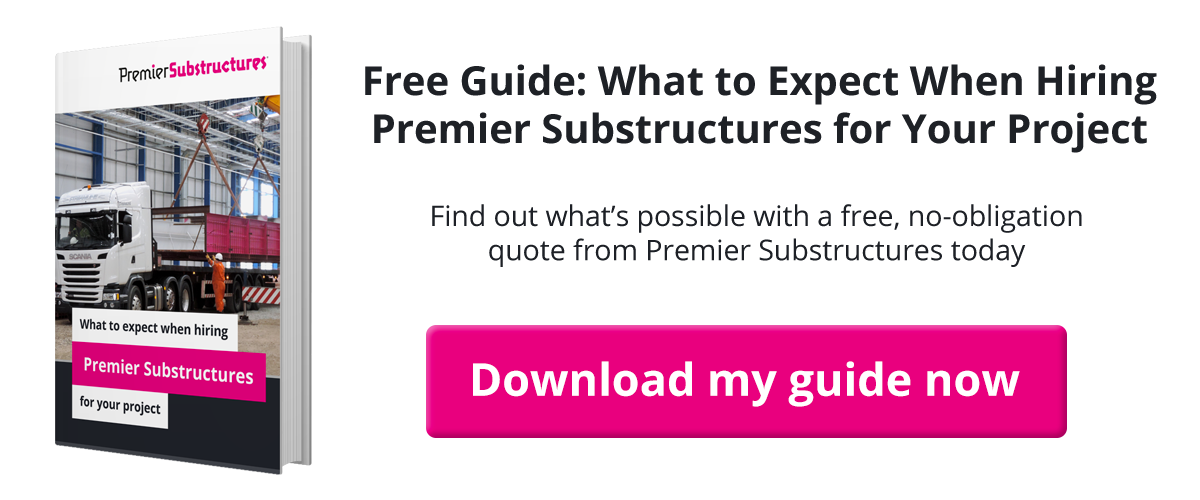Are you a main contractor – or part of a preconstruction team – looking for a rough idea of costs for a prefabricated steel substructure?
Staying on-budget is a big concern for many of our clients. Just like them, your project may not be privately funded, instead relying on lottery or government funding to complete the work.
You may have already quoted to complete the works with in situ concrete, and are now considering another method of constructing below-ground level – however, you need the new approach to come in at the same cost.
That’s why, as a subcontractor who specialises exclusively in prefabricated steel substructures, I’ve put together this blog post to help answer the tricky question of cost.
Below, I’m going to explain what the typical costs are when installing a prefabricated steel substructure, along with any factors that can affect it.
What are the average costs to install a prefabricated steel substructure?
The average price of a prefabricated steel substructure can differ greatly from project-to-project, and there are many variables to take into consideration – the main one being the size of the substructure itself.
On average, I’d say the typical costs of installing a prefabricated steel substructure can range between £800 – £3,000 per sq. metre.
However, saying that, we have never yet installed a substructure that cost over £3,000 per sq. metre – which should hopefully give you a slightly better idea of the cost limit.
Prefabricated steel substructures aren’t the cheapest approach – compared to more traditional methods – but it’s worth noting that there will also be a long-term saving with this method.
This is due to eliminating the risks of leaks or necessary repairs which often occur with in situ or precast concrete techniques.
1. The size of your substructure
Economies of scale come with larger substructures. Generally, the larger the substructure, the more economical it becomes.
Size impacts the cost of:
- Excavating the soil
- Extra steel and fabricating labour
- Additional transport if multiple trips are needed
- Additional concrete
2. Ground conditions
With solid ground conditions, specialist installers can assess the ground investigation (GI). A thorough check of the excavation area will allow them to asses the risk of leaving the sides of the excavation at 90 degrees.
This is something we usually do using our own 35 years of experience assessing ground conditions, along with input from our structural engineer. Trial digs can also be carried out on-site to confirm what was completed in the GI is as reported.
All this helps to considerably reduce the risk of any earth collapsing. If there is even the slightest risk of earth collapsing, you would have to pay to temporarily sheet-pile the excavation or step the side of the dig.
3. Transportation costs
Additional transportation costs may be applicable if your project’s location is based some distance from the factory your prefabricated steel substructure has been manufactured in.
As an example, our factory is based in Lincolnshire, so if we were to deliver to, say, Cornwall or Scotland, there would be an additional charge for transport.
4. Additional fixtures/fittings
Fittings can be added to a prefabricated steel substructure – for instance if you need to attach items to the side walls of your structure, we fix unistrut or captive nuts for this. However, it should be noted that drilling the steel walls will impact on the waterproofing.
The extra cost of additional fittings is minimal, and these can be added in the future if more are required.
Advice from a specialist subcontractor
If you’re interested in commissioning a prefabricated steel substructure for your project, but are worried about costs or general logistics, the best advice I can give you is to speak to a structural engineer or architect and get some free, independent advice.
However, as specialist subcontractors with an innovative way to construct below-ground, it may also be a good idea to get in touch with us for a no-obligation consultation to find out what’s possible for your project.
Conclusion
Thanks for reading, and I hope I’ve managed to answer your question (roughly) of how much it costs to install a prefabricated steel substructure. It can depend on various factors, as highlighted above.
A structural engineer or architect might be able to help talk you through your options, or you could also get in touch with a specialist subcontractor, like me.
Do you have any questions about costs for a specific project? Let me know in the comments, or feel free to get in touch with me directly. I’m always happy to help!

